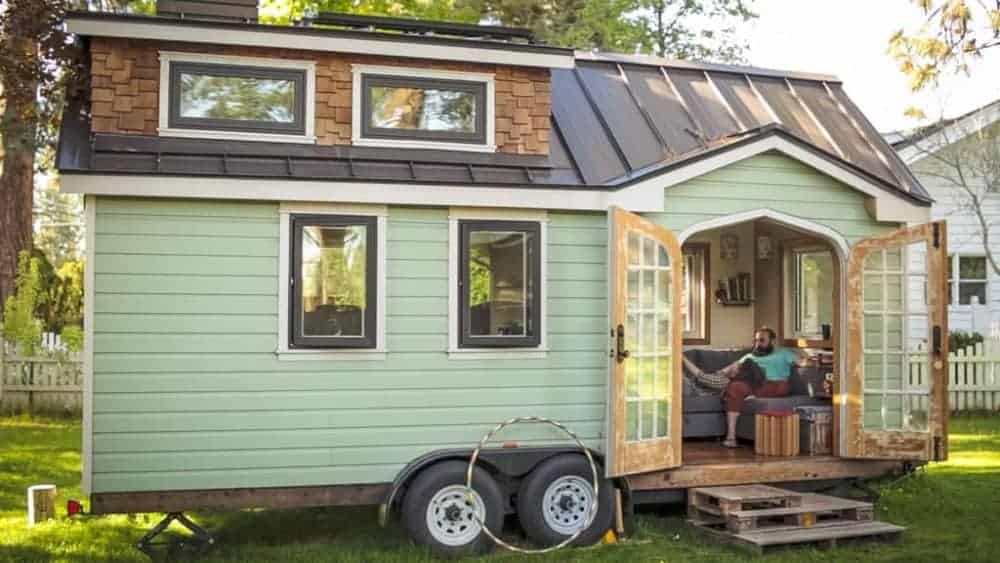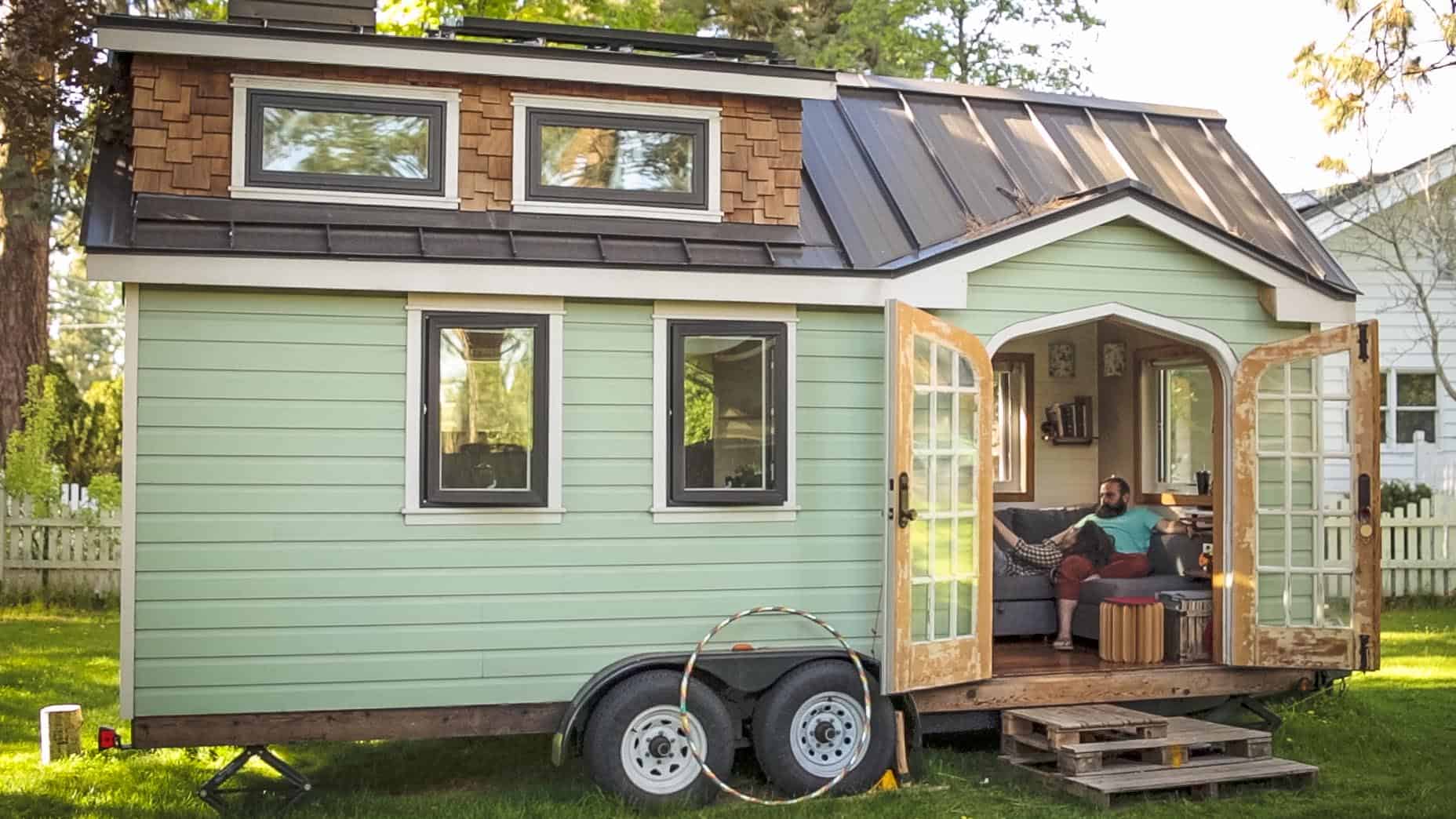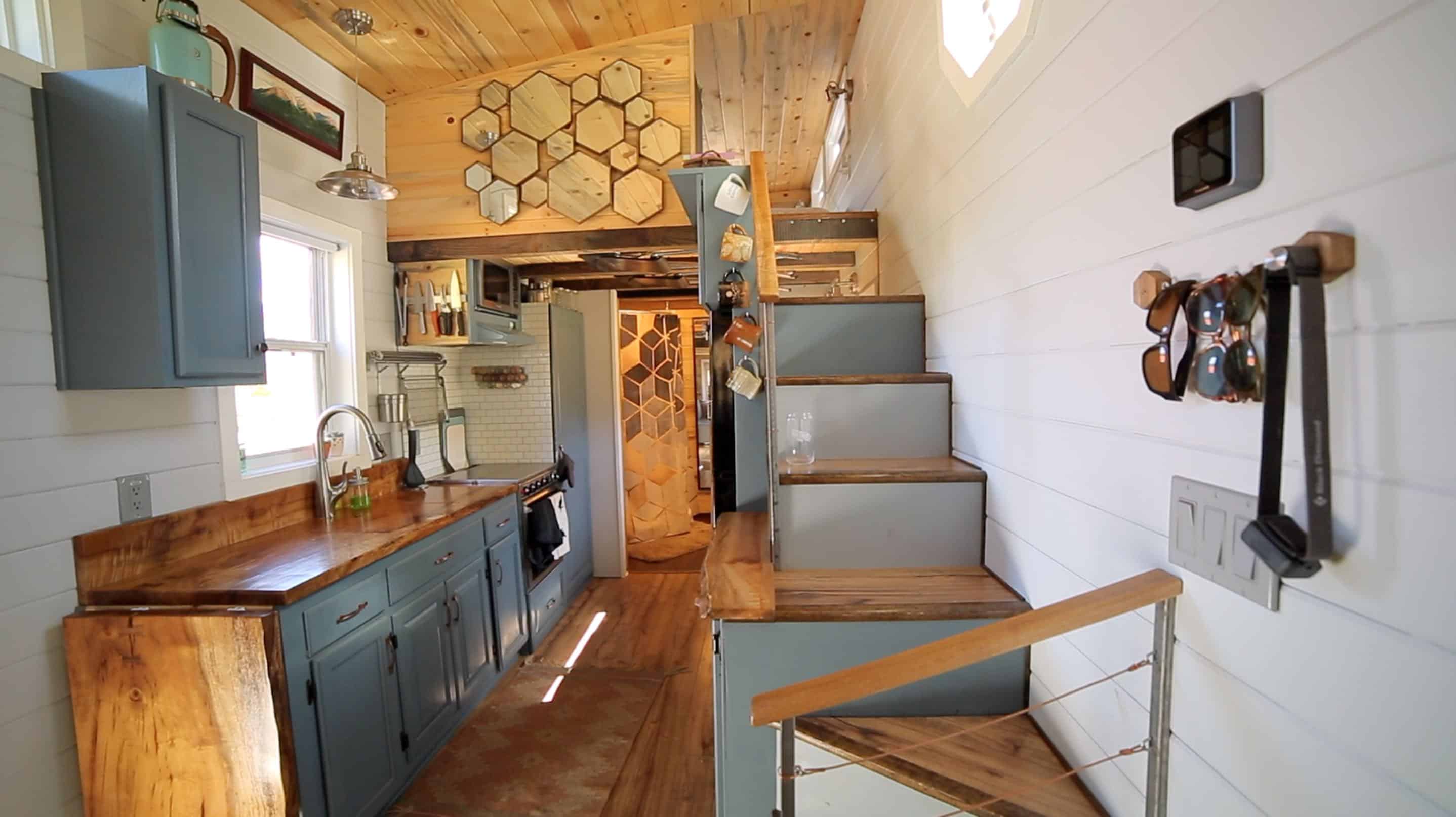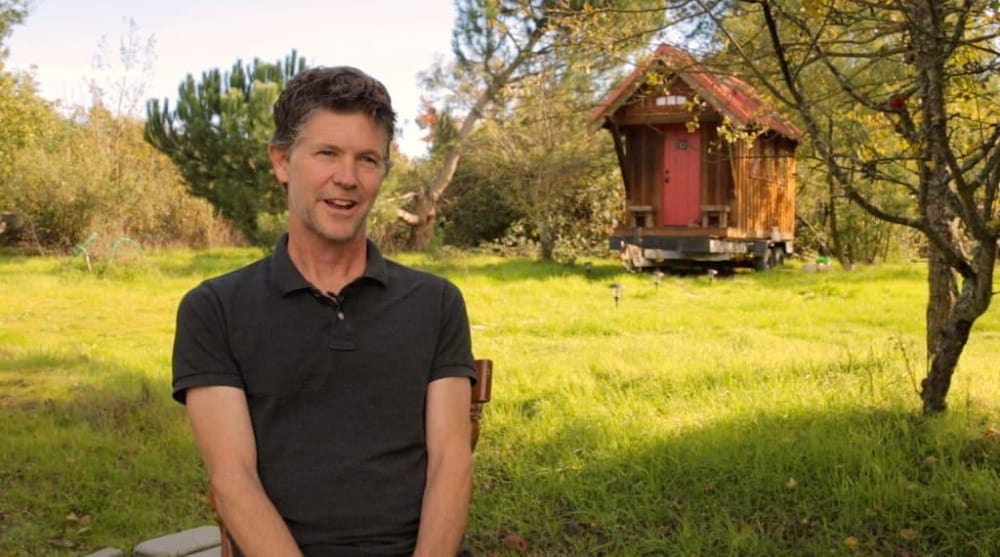Tiny House Movement: What’s all the fuss about?
647 shares What’s the big deal about the tiny house lifestyle? The modern tiny house movement is an empowering cultural shift centered around consciously simplifying….

What’s the big deal about the tiny house lifestyle? The modern tiny house movement is an empowering cultural shift centered around consciously simplifying. It’s a new (or revived) approach toward defining what a home is—and how much space and stuff it takes to be happy. From that, it’s led to a groundbreaking expansion of housing solutions.
The tiny house movement emphasizes individuality, from design to a simple lifestyle curated around creating fulfillment.
No one size or design fits all.
And that’s why tiny houses come in so many styles, appealing to people from all walks of life. Each as individual as the owner, from consciously simplifying retirees, starter home-seeking couples, to minimalist Millennials, and everything in between.
The fascinating complexity of the tiny house movement inspired my boyfriend and me to travel across North America with our own home on wheels. On a personal level, our THOW offered us an opportunity to both reduce stress and focus on our film making passion.
Through our travels to explore the tiny house movement, we discovered how genuinely empowering tiny house living can be for a diverse group of people.
Our key takeaway: a tiny home is a multi-tool to meet personal goals, financial and lifestyle, and community needs—a wide range of quality, affordable and environmentally-friendly housing.
What other kinds of housing is that adaptable? The traditional housing market is incredibly limited. As a reaction to that, a steadily growing number of individuals and organizations are bootstrapping their own solutions by building or buying tiny houses.
Let’s dig into the nitty-gritty of the modern tiny house movement.
*This post may contain affiliate links. Please read our disclosure policy for more info.
What is a tiny house?
Tiny houses are typically recognized as dwellings 400 square feet and under, on wheels or a foundation. The typical tiny house on wheels (THOW), aka movable tiny house, is built into a trailer, using traditional housing materials and techniques.
THOWs are a hybrid structure. They bring together the mobility of a travel trailer with the durable materials and construction techniques of a traditional home, making it entirely suitable for year-round living.
A well-built THOW is highly insulated, sturdy, and customizable, from initial build to future home renovations. In general, they tend to be heavier and less agile on the road than an RV, though not always the case.






If desired, the wheels can be removed so that the house can be set on a foundation.
It’s important to point out that a “tiny home” can be anything, from a traditional RV, cob house or yurt, to converted fill-in-the-blanks—school bus, grain silo, train car, etc.
Tiny houses don’t have to be extra minimal or without character. Many people create efficiently designed yet impeccably decorated spaces, and what some refer to as “luxury” tiny homes.
What started the tiny house movement?
Americans tend to forget that living simply and in small structures is a way of life that has been around since the beginning of time, from cave dwellings to pioneer cabins and beyond.
In the 20th century, there are multiple examples of small structures popping up to meet housing demand and being used as an escape from traditional thinking; from early mobile homes, addressing post-WWII housing needs, to the “embrace of simple living in the back-to-the-land” movement of the late ’60s and ’70s.
The merits of simple living have been explored in many great books in the last thirty years, with more and more being released in the ’90s and into the 21st century.
Jay Shafer built his first tiny house on wheels in 1999, not long after that, he co-founded the Small House Society. Then in 2006, he received national exposure on Oprah, the top taste-maker of the time.

Just in time to enter America’s consciousness before the Great Recession hit.
The housing crisis of 2008 elevated the tiny house movement tremendously. Downsizing out of necessity has slowly led to a robust national paradigm shift around the meaning of home and success, set to the backdrop of the destructive culture of over-consumption, crippling stress, and economic inequality.
For many, a new American dream emerged, one of reduced debt and greater freedom that can be achieved by tiny living.
Over the past 12 years, the tiny house movement slowly but steadily grew. Thanks to more recent TV exposure, it has exploded in popularity.
Overall, the movement is driven by the growing number of folks ditching the traditional script of “keeping up with the Joneses” for a simpler life. The square footage doesn’t define the movement, rather the attitude and lifestyle approach. Fewer things, more experiences, and a better quality of life.
The tiny house movement is now worldwide, with massive popularity in Australia and burgeoning in several other countries.
How much does a tiny house typically cost?
The cost of a tiny house varies considerably based on size, level of customization, and materials used. Despite the huge range, the price is considerably lower than your average full-size home.
While again the amount varies, tiny homes can cost less than $20,000 if you’re a savvy DIY-er. On the other end of the spectrum, some people shell out $90,000 or more for professionally-built, upscale and decked-out tiny homes.
What are the main challenges facing people in the tiny house movement?
For those dreaming of a tiny house living, they envision a magazine-ready home in a beautiful location, where your problems have all but gone. Like an everyday vacation. Unfortunately, that is not true.
There is no silver bullet for solving all your problems, but a tiny home can help.
Speaking from my experience, our tiny house most definitely isn’t always Instagram-ready. It gets messy and dirty quickly and we clean every day! Though, it only takes the fraction of the time to clean than our previous traditional home.
As a couple, we do get in each other’s way. Read more about how we’ve survived without killing each other here.
Living in a tiny house clearly does not come without challenges.
There is drastically less space, which can make starting or growing a family an issue, especially as your kids become teenagers and desire more privacy.
Tiny houses are not for everyone, or even for all phases of life. Very few live in one structure their entire lives. Accordingly, we move to adapt to changing needs.
You also need to consider local zoning laws and building codes that govern where you can put your tiny home. In fact, legal tiny house parking is the biggest challenge facing the movement. This is especially important if you are not comfortable living “under the radar,” like most tiny house dwellers.
While code enforcement is complaint-based, it only takes one for a code-violation and eviction notice to land on your door.
Watch our documentary series, Living Tiny Legally to learn more.
Besides secure tiny home placement, legal acceptance is critical for gaining access to more financing options. The good news is that legal obstacles are slowly but surely being overcome in a growing number of cities and states. This precedent provides a how-to guide for other cities and states.
But, for those who embrace everything the movement offers, these challenges could be minimal compared to the payoff of a more fulfilling and more balanced life.
What are the top benefits of tiny homes?
For many who join the tiny home movement, the motivation is to reduce the amount they spend and consume and live a simpler life—a less is more lifestyle concept. It’s a way to create a higher quality of life by better utilizing your time, energy, and finances.
Cost Savings
Living in a tiny home can drastically reduce the amount of money people spend on housing costs like taxes, insurance, mortgages, and repairs. That means more money can be dedicated to saving for the future and reducing month-to-month strain. Or perhaps using the extra expendable income to use toward pursuing your passions, like travel or starting your own small business.
Freedom to Move
Another big motivator for tiny house living is flexibility. Want to move with your home when significant life changes arise or in search of your ideal city? Then this could be an excellent option for you.
Tiny houses on wheels originally came about as a means to get around restrictive codes. They quickly became attractive to many as a mobile asset. For example, whatever life changes arise, you can take your tiny home investment with you.
As a tiny homeowner experiences infrequent significant life changes, like a new job in another state, he or she can relatively easily relocate with their home.
The real value is the reduction of the heartache and stress of hunting for a new home that meets your budget and lifestyle needs.
Though, there are challenges to consider, such as zoning rules that determine where you can park your tiny home. Generally speaking, picking up and moving is much less of a hassle than with a traditional home.
There are also tiny house communities springing up in the country. Tiny homeowners can share land, outdoor space for gardening and recreation, and gain a sense of community.
The vast majority of movable tiny house dwellers only move one to three times ever. We frequently traveling tiny house dwellers are only a small subset of the overall movement.
Green and Simpler Living
It’s no surprise that those who support the tiny house movement also value living more sustainably. Tiny house living is more environmentally friendly because it reduces energy usage and waste. In fact, a recent study found that after downsizing, most tiny home dwellers reduced their energy consumption by 45 percent.
For some, the allure of living off-grid offers the ultimate freedom through self-reliant sustainability. While it is a simpler way of life, it is not without manual labor, as we found when we visited Ariel in the Wyoming mountains.
Meet Community Housing Needs
More people than ever are living alone and nearing retirement age with a fixed social security income. A rapidly growing number of minimalist minded people find that a well-designed tiny home comfortably suits their needs at a fraction of the cost of market-rate housing. Thus providing a higher quality of life, where savings can be used toward healthcare, retirement, etc.
In our travels, we’ve met numerous couples and families who used their tiny house as a stepping stone that helped them save and later buy a traditional house. Then their tiny house becomes an asset to house another family member. It can also bring in rental income, or even become a vacation home.
Community organizations are popping up to create quality, affordable tiny homes for those in need of secure housing. For example, the Veterans Community Project creates tiny house communities that provide housing and services for homeless vets. Additionally, in Detroit, a tiny house neighborhood allows minimum wage workers to rent-to-own their own homes.
Just two of dozens of inspiring examples of tiny houses meeting the community needs.
Yet another excellent role tiny houses can play is infill housing as accessory dwelling units (ADU). Movable tiny homes provide a highly valuable opportunity to increase housing supply rapidly. It’s a kind of instant development that uses existing land and infrastructure, translating into reduced costs, resources, and impact.
The most common tiny house parking spot is in a backyard. In this arrangement, low-cost lot rent contributes to the overall property tax and mortgage, making it a mutually beneficial for both the primary homeowner and the tiny dweller; what’s more, the close proximity of a backyard neighbor lends itself to relationship building and resource sharing.
Slowly but surely, more and more cities are officially allowing tiny houses as ADUs.
Why should you join the tiny house movement?
In the US, we have all seen the downsides of excess and the limits of the housing market. Perhaps we could all benefit from living more simply and in smaller, more environmentally-friendly structures.
Tiny living is not just for one particular socioeconomic class of people and is not just about affordability. Typically, a combination of factors motivates most tiny home dwellers.
However, choosing to live tiny tends to emphasize experiences and relationships over things. Above all, the choice to live this way is very personal.
Self-Empowerment
The concept of self-empowerment is at the heart of the modern tiny house movement—taking direct control of your life and your quality of life by reevaluating your priorities.
If satisfaction and comfort can be found in a tiny home, then maybe, just maybe, real SUCCESS comes from the quality of your relationships and experiences NOT materials things.
There is, absolutely, no time like the present to prioritize your well-being and embrace a freer way of life. Shake off the mold. Redefine what personal success and home look like to you.
Ultimately, getting to know yourself and identifying your priorities are essential to crafting a satisfying lifestyle that’s just right for you.
A tiny house just might be the tool you need to make a big positive lifestyle change.


Similar Posts
9 Adorable Sheds for Your Backyard Retreat
A shed house can make a backyard truly shine, whether you use it as a rental, an AirBnb or a home office.
The Best Tiny House Wood Stoves For A Warm And Cozy Winter
When chilly weather arrives, there’s nothing better than curling up by a warm fire. Seriously, what’s homier than that? Doing it in a tiny home,…
How much does a tiny house cost?
Many people looking to downsize have this main question: How much does a tiny house cost? The truth is, tiny house prices can vary widely,…
20 Brilliant Tiny House Interior Design Ideas for Maximizing Space
Looking for inspiration for your tiny house? Check out these gorgeous interior ideas.
How to pick the best tiny house on wheels floor plan
Do you want to live in a tiny home on wheels? That’s an easy question. Of course, you do, right?! But when it comes to choosing…
19 Glamping Destinations That Will Change the Way You Camp
Looking to get out of a tent and into some glamping? Here are destinations you won’t want to miss.